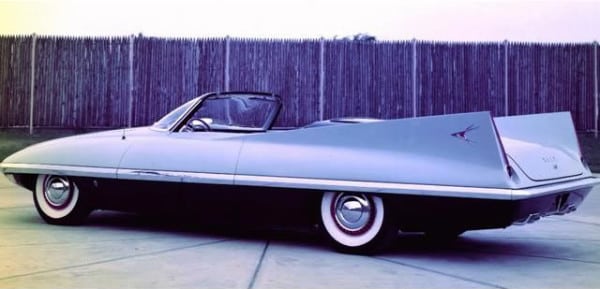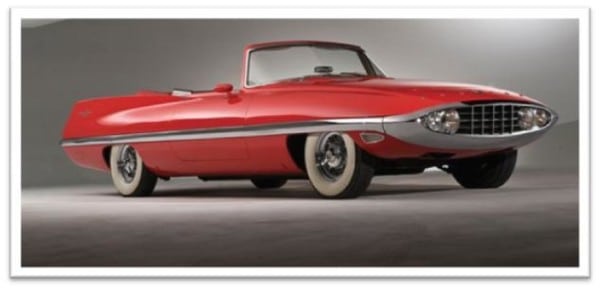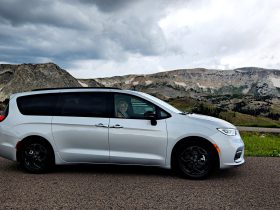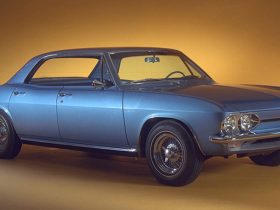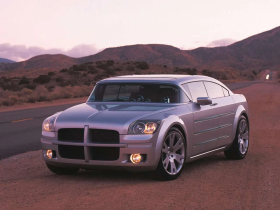By the early 1950s, Detroit had become a hotbed of conceptualization. The Big 3 were releasing ultra-modern, futuristic, and often outlandish concept cars just about every year. Despite the large number of concepts this era was producing, though, the public couldn’t get enough of them. The cream of the crop were the innovative, futuristic, but still operational concept cars. When our subject today first released as the 1956 Dart Concept and later became the 1957 Chrysler Diablo, it met all of those criteria and became one of the most-recognized concept vehicles ever made.
The 1957 Chrysler Diablo had unmatched style, showcased many engineering innovations for the time, and predicated some of today’s common automotive elements. With bright red paint, a devil’s pitchfork theme throughout, and a look that demanded it be remembered, the Chrysler Diablo had everything.
Background
In 1956, Chrysler’s design team sent specifications to their friends at Ghia in Italy and received the Dart Concept in return. This was a hardtop convertible coupe with a pair of outlandish fins.
After a tour in 1956, the Dart Concept was returned to Italy, this time with a few revision ideas. The convertible, folding hardtop was replaced with a more traditional soft top, the suspension was improved and the engine saw some tuning. It returned as the silver on black Dart II and hit a few shows during the 1957 season before once again returning to Italy. There, it toured Europe a little as well, after getting an Italiano Red paint job.
After a summer touring Europe, the Dart II returned to Ghia where Chrysler had sent even more updates for the car. These modifications were significant and were based on wind tunnel testing that design great Virgil Exner had been working on with models of the Dart Concept.
The changes became what we now recognize as the Chrysler Diablo.
Design
Exner was convinced that tail fins were good for aerodynamics. He was right, though probably chagrined to find out that huge tail fins were not the answer, but instead, muted, not as sharply-shaped fins were better. Swallowing his love of the aviation-era mega-fins of the day, probably on the advice of wind tunnel consultant and famed expert Giovanni Savonuzzi, Exner cut down his models until he found just the right shape. It became the Chrysler Diablo’s signature rear end.
The car begins with a rounded, manta ray-like face, with a long oval grille inside a chromed fascia with two headlamps at either corner. The hood curved gently upward and the chrome grille work continued down the side of the car in a mid-stripe all the way to the rear, forming the top of the low wheel wells along the way.
At the rear, dramatic changes from the previous designs had been made. The huge fins were much more muted and the slim trunk had been replaced with a deeper, taller deck lid to fatten it up. This helped reduce the fins without requiring the shape of the rear end be compromised into an unappealing mimic of the front end.
The cloth top was kept, though its shape changed somewhat, and the side mirrors were slimmed and reduced to improve air flow around the car. The finished dimensions were a massive 223 inches long by 80 inches wide at 54 inches high. Its wheelbase was 129 inches.
All of the attention to aerodynamics paid off nicely. The Diablo’s wind tunnel test at Chrysler’s Chelsea Proving Ground in Michigan gave the car a coefficient of drag of just .17, two full points better than what Bertone was able to achieve with their BAT concepts during the same period (more here).
The Interior of Innovation
The interior of the Chrysler Diablo continued the exciting exterior’s look and forward-looking ideas. The dashboard is a combination of automotive and spacecraft design, with dials, knobs and buttons along with huge gauges and an ovular, Euro-style steering wheel.
The Diablo seats four in large, plush pilot seats and is split down the center by a wide tunnel, housing the driveshaft. For such a large car, interior space is actually somewhat cramped with little room in the back seats.
The windows were electric, the top was self-opening and closing, and even the antenna retracted electrically. For the driver, power brakes, air conditioning, and power steering were also built into the Diablo. Every one of these things was considered either “not quite production ready” or extremely premium at the time.
Pitchfork Power
Being completely street legal, the Chrysler Diablo was powered by a standard Chrysler power plant and drivetrain.
Under the hood was a 392 cubic inch V-8 putting out about 375 horsepower. This was the same engine pushing the popular 300-series at the time. That coupled to a TorqFlite transmission with push-button control on the dash.
With all that under-hood muscle plus the near-perfect aerodynamics it sported, the Diablo was nicknamed The Hydroplane on Wheels.
Where Is It Now?
The Chrysler Diablo had one hell of a journey before becoming the Diablo and once finished, Chrysler returned it to Ghia once again in 1958. It was displayed at events in Europe for a few years before being sold to a private owner. In the mid-1960s, it returned to the U.S. and was garaged and carefully preserved.
It changed hands in 1988 and the new owner showed the car at Concours and other events occasionally, keeping it in its original condition and in running order. Everything but the tires on the car are original to the Diablo concept.
It was brought to auction in 2008 at the Sports & Classics of Monterey by RM Auctions, but at a high bid of $1.2 million, it failed to make its reserve and was not sold.
In January of this year, it went up for auction again, selling for a mere $1.375 million.
The Diablo name, of course, was passed on by Chrysler to Lamborghini during their ownership to become the successor to the Countach in 1990.
Video
https://www.youtube.com/watch?feature=player_embedded&v=aMeiIP9DsIk




